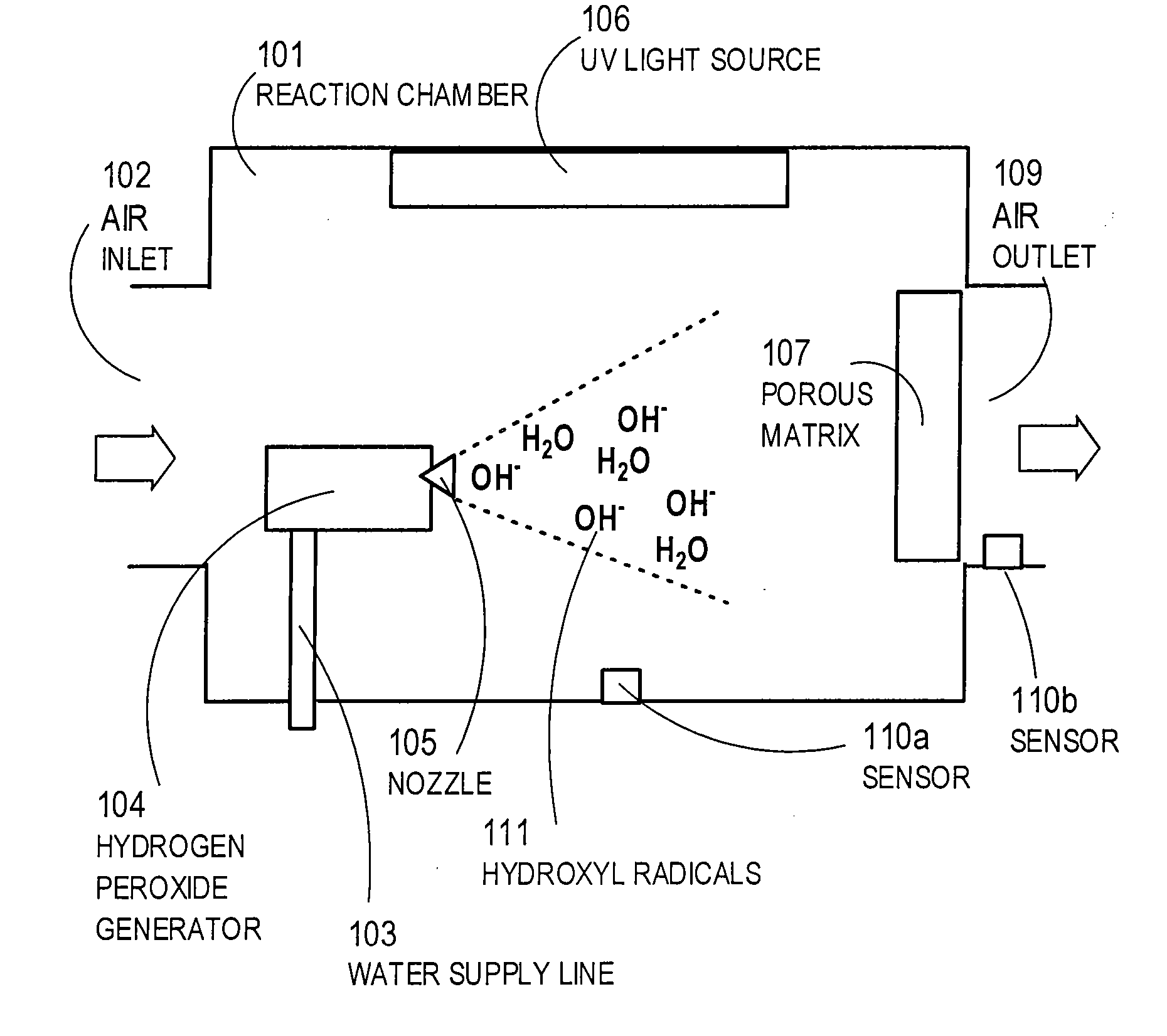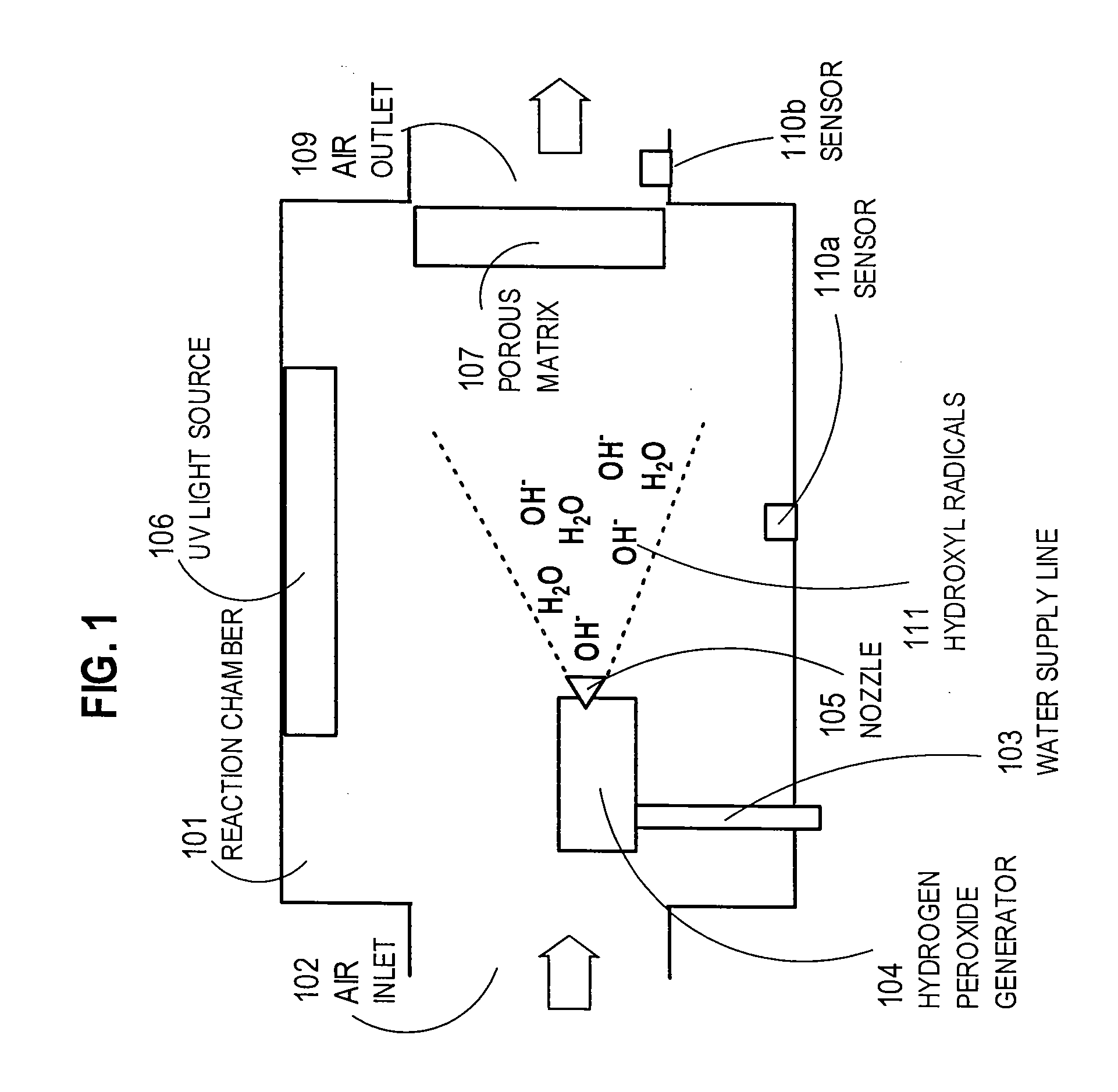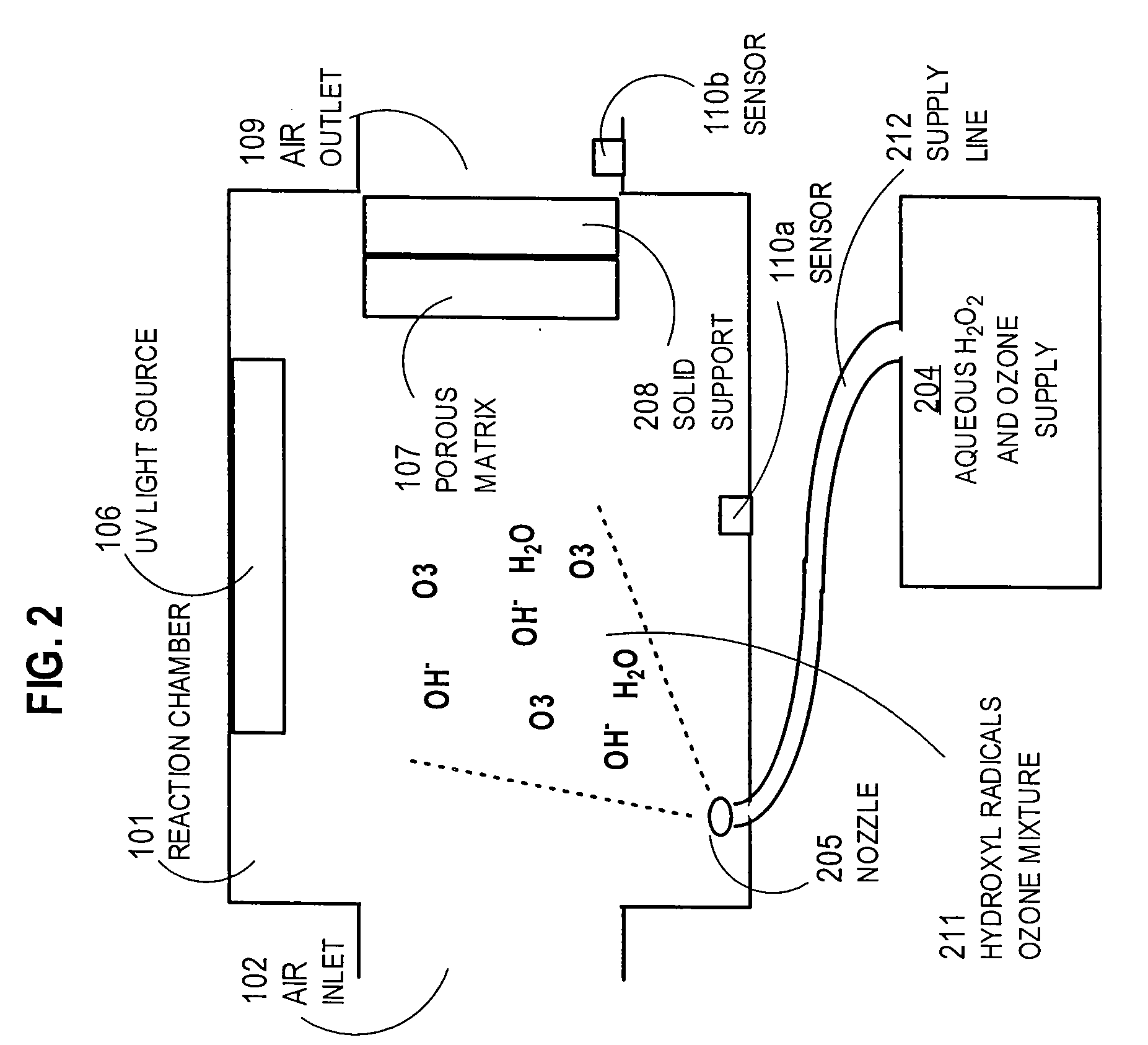Hydroxyl free radical-induced decontamination of airborne spores, viruses and bacteria in a dynamic system
a dynamic system and hydroxyl free radical technology, applied in the direction of atomized substances, lighting and heating apparatuses, heating types, etc., can solve the problems of significant hospital stay, difficult to neutralize airborne biological and chemical toxins, and the risk of patients being infected with i>staphylococcus/i>,
- Summary
- Abstract
- Description
- Claims
- Application Information
AI Technical Summary
Benefits of technology
Problems solved by technology
Method used
Image
Examples
example 1
5.1 Example 1
Experimental Set Up
[0101] A. The Air Sampler
[0102] The New Brunswick Scientific Microbiological Air Sampler Series STA-204 (a slit sampler) was used to test performance of the embodiments. To test the extent of contamination in incoming air just before it enters the neutralization system, samples were passed over the system inlet plate. Samples of outgoing air just after leaving the system were passed over the system outlet plate. The slit sampler works by drawing a known total volume of air by vacuum through a slit opening. A pressure drop that occurs across the slit causes the air with its entrained contaminants to accelerate to a higher velocity. The airborne pathogen contaminants, because of their heavier mass, are impacted onto the surface of a sterile petri dish placed on a rotating, timed turntable. Only the small area of surface of the agar that is disposed just below the slit is exposed to the contaminated air. Thus as the dish rotates, different sectors of a...
example 2
5.2 Example 2
[0110] The parameters of the experiment are set forth in Table 3 below.
TABLE 3Parameter NameParameter SettingAirflow Rate50 CFMWater flow to nozzle0.46 GPH (1.74 ml / hr)Injector Model Number684O3 ConcentrationAs attained using injectorand flow rate specifiedH2O2 Concentration25%# of UV lights 6Position of UV lights8″ from media padNumber of Nozzles 1Model of Nozzle684Position of Nozzle2.5″ from media padMedia Pad Size1.5 × 3.25Velocity Through media pad1,600 FPM
[0111] Control: Room air was drawn through an inactive neutralization system with all components switched off before any spores were intentionally introduced. No hydrogen peroxide or ozone was introduced, and the UV light was off. The system inlet plate was exposed to incoming room air before it entered the reaction chamber 101, and the system outlet plate was exposed to outgoing air that had passed through the reaction chamber 101 of the inactivated neutralization system. After a thirty...
example 3
5.3 Example 3
The UV / H2O2 System
[0114] The UV / H2O2 system used in Example 3 is the same as in FIG. 6, except that the ozone generator was turned off.
[0115] Control: As a control, room air was drawn through an inactive neutralization system with all components switched off. No hydrogen peroxide was introduced and the UV light was off. The system inlet plate was exposed to incoming room air before it entered the reaction chamber 101, and the system outlet plate was exposed to outgoing air that had passed through the reaction chamber 101 of the inactivated neutralization system. After a thirty minute exposure, the system inlet and outlet plates were collected and cultured for 24 hours at 37 degrees C. Fifty-one colonies were counted on the System Inlet Dish. No colonies were observed on the system outlet plate, FIGS. 8A and 8B. The absence of colonies on the system outlet plate shows that there are no bacteria in the reaction chamber 101.
[0116] Test 1: Bacillus globii spores were int...
PUM
| Property | Measurement | Unit |
|---|---|---|
| wavelength | aaaaa | aaaaa |
| UV wavelength | aaaaa | aaaaa |
| wavelengths | aaaaa | aaaaa |
Abstract
Description
Claims
Application Information
 Login to View More
Login to View More - R&D
- Intellectual Property
- Life Sciences
- Materials
- Tech Scout
- Unparalleled Data Quality
- Higher Quality Content
- 60% Fewer Hallucinations
Browse by: Latest US Patents, China's latest patents, Technical Efficacy Thesaurus, Application Domain, Technology Topic, Popular Technical Reports.
© 2025 PatSnap. All rights reserved.Legal|Privacy policy|Modern Slavery Act Transparency Statement|Sitemap|About US| Contact US: help@patsnap.com



